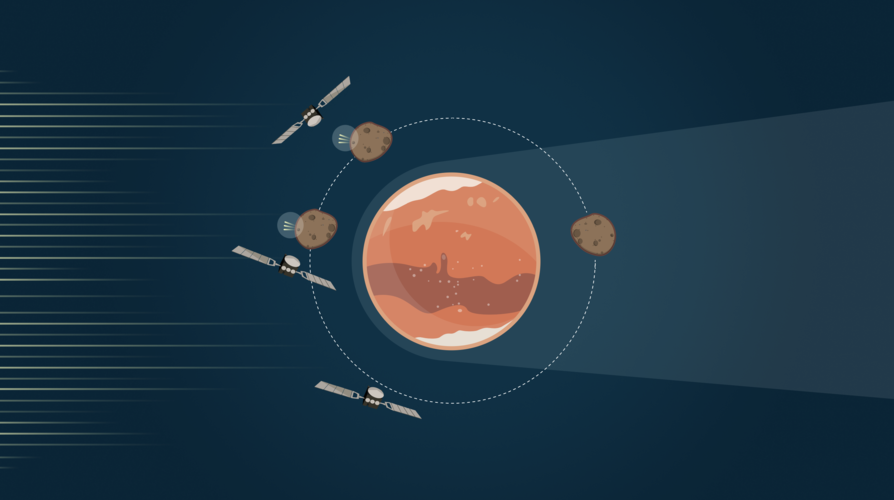
From the Soviet Phobos program of the 1980s through to future missions such as the Japanese Space Agency (JAXA)’s Martian Moons eXploration (MMX) mission planned for launch in the mid-2020s, there have been many dedicated efforts to explore the origin, environment, behaviour and evolution of Mars’ largest moon.
ESA is partnering with JAXA on the MMX mission, providing communications equipment, support in spacecraft tracking and control, and opportunities for scientists to join the mission’s science team. MMX will characterise both martian moons, Phobos and Deimos, deploy a rover to Phobos’ surface, and return a sample of Phobos to Earth for analysis. A key aim of MMX is to determine if the moons are asteroids captured by Mars’ gravity, or debris remaining in orbit after a giant impact on Mars.
Beyond our knowledge of Phobos – and other rocky or icy bodies exhibiting similar physics that ESA plans to explore, from Mercury to asteroids to the Galilean moons of Jupiter – understanding how charged particles behave in space is critical to space exploration.
For example, astronauts on the Moon are exposed to the solar wind, a key consideration for ESA’s forthcoming plans for human expeditions to space. Surface interactions on planets and moons are also a core component of surface chemistry, possibly including how bodies form and store water.
“This finding uses Mars Express in a truly unique way to solve an ongoing cosmic mystery – it shows wonderful ingenuity and highlights the flexibility and diverse capabilities of the mission,” says ESA’s Mars Express project scientist Dmitrij Titov.
“The study also shows the value of our operations colleagues and data archives in enabling new discovery and knowledge and making important work such as this possible. We must understand the space environment to explore it with either satellite or astronaut, and so revealing the dynamics at play in the martian system is an important step forward.”
Yoshifumi and colleagues accessed data from the 2016 Phobos flyby provided by the ESA Planetary Science Archive.



